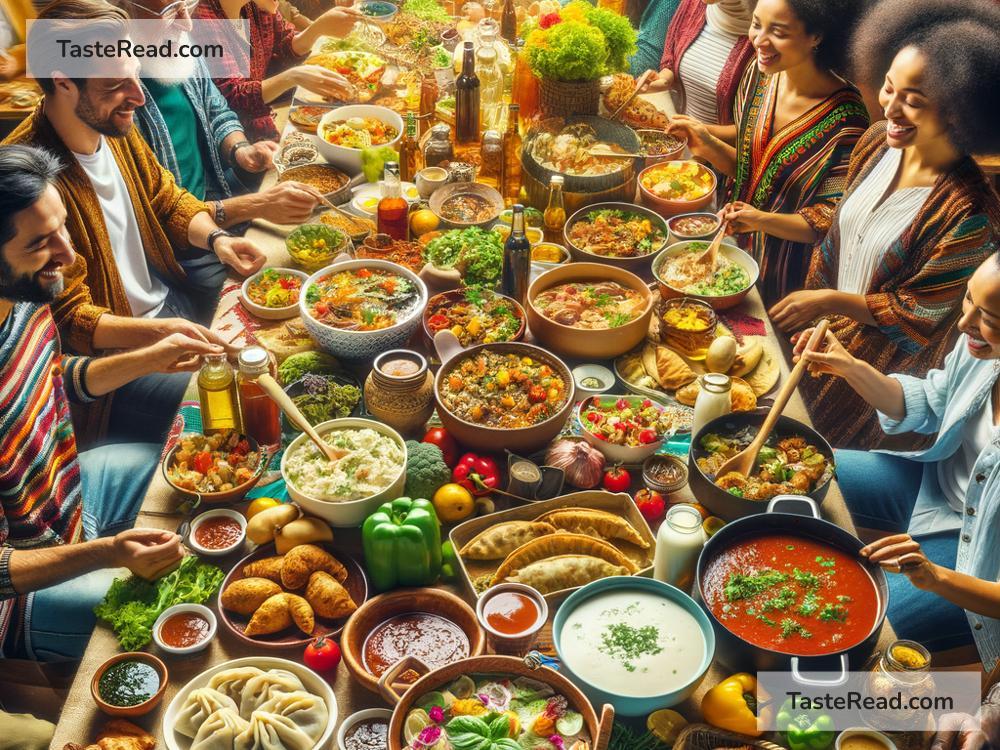Foods for Enhancing Community Engagement: Bringing People Together
Food has a magical way of bringing people together. Whether it’s sharing a homemade dish, chatting over coffee, or hosting a neighborhood barbecue, food can break barriers and create lasting bonds among community members. When we plan meals or organize events centered around food, we create opportunities for conversation, connection, and collaboration. In this article, we’ll explore how food can enhance community engagement and suggest ideas for nourishing not just the body, but the spirit of your community.
Why Food Matters in Community Engagement
Food is universal. No matter where we come from or what language we speak, everyone eats. It’s a common need and a shared joy. Food can help foster unity, make people feel welcome, and encourage participation. Here’s why it works:
- Breaking the Ice: Sharing a meal or snack creates a relaxed environment where people feel comfortable opening up.
- Cultural Exchange: Food allows people to explore each other’s heritage and helps create appreciation for diverse traditions.
- A Spirit of Generosity: Offering food to others is an act of care that reminds people they belong in the community.
By using food as a tool for engagement, we can build trust, strengthen relationships, and encourage collaboration—all of which are essential for a thriving community.
Ideas for Using Food to Engage Your Community
Here are some simple and effective ways to use food for fostering connections in your neighborhood, school, workplace, or any community space.
1. Potluck Dinners
A potluck is when everyone brings a dish to share. It’s a great way for community members to come together while keeping costs low. Potlucks encourage participation and let people showcase their favorite recipes, including family or cultural specialties.
Tips:
– Choose a theme, like “international cuisine” or “comfort food.”
– Create a signup sheet to ensure a mix of appetizers, main dishes, and desserts.
– Encourage storytelling—ask participants to share the story behind their dish.
2. Food Festivals
Hosting a food festival is an exciting way to bring the community together and celebrate diversity. Each booth or station can feature dishes from different cultures or highlight local businesses and farmers.
Tips:
– Involve vendors, restaurants, and home cooks from your community.
– Include live music or cooking demonstrations for added entertainment.
– Use the event to promote local produce and sustainability.
3. Community Picnics
Picnics create a casual and fun atmosphere for people of all ages. Find an open space like a park, schoolyard, or community center, and invite everyone to bring their blankets, baskets, and folding chairs.
Tips:
– Provide easy-to-prepare foods like sandwiches, fruits, chips, and cookies.
– Organize group activities, such as games, talent shows, or story-sharing.
– Encourage people to invite newcomers or neighbors who may not know others yet.
4. Cooking Classes
Cooking classes offer a hands-on way to learn, connect, and bond. Invite local chefs or skilled cooks to teach a particular recipe or cooking style. Participants can share knowledge and leave with valuable skills—plus delicious food to take home.
Tips:
– Include recipes that use affordable, easy-to-find ingredients.
– Choose themes like “healthy meals,” “quick dinners,” or “fun baking for kids.”
– Partner with schools, nonprofits, or senior centers to reach specific groups.
5. Coffee and Tea Gatherings
Setting up coffee or tea stations at local events can create small, informal spaces for conversation. You can host “coffee chats” regularly or pair them with book clubs, community meetings, or workshops.
Tips:
– Serve inexpensive drinks and offer simple snacks like cookies or muffins.
– Use reusable cups to promote sustainability.
– Include icebreakers or discussion topics for newcomers.
6. Community Bake Sale
A bake sale, whether for fundraising or simply for fun, can unite people with sweet treats. Local bakers and enthusiastic home cooks can contribute, making this an inclusive initiative.
Tips:
– Use the funds raised to support local causes or community groups.
– Create themed bake sales for holidays or events, like “Halloween treats” or “summer pies.”
– Provide recipe cards for people who want to learn to make the items themselves.
7. Garden-to-Table Gatherings
A community garden can be much more than fresh veggies—it’s also a hub for engagement. Organize events where participants harvest produce together and cook meals from the bounty. This strengthens cooperation and teaches sustainable practices.
Tips:
– Host seasonal “harvest potlucks” or cooking contests.
– Save seeds or start DIY gardening workshops for participants.
– Make space for beginners to join and learn about gardening.
The Social Power of Food
When food is at the center of community activities, it helps people feel connected. Numerous studies show that shared meals improve mental health, reduce loneliness, and strengthen the sense of belonging. Moreover, food-focused events often encourage generosity, respect, and appreciation for diversity—all vital for building a strong community.
Key Takeaways
To make food work as a tool for engagement, remember these key principles:
1. Inclusivity: Invite everyone—make sure people feel welcomed, regardless of age, background, or social status.
2. Participation: Encourage contributions, from dishes to organizing events.
3. Diversity: Celebrate and share the unique food traditions that make your community special.
4. Affordability: Keep costs low so everyone can participate.
Through creative use of food, we can build stronger, more connected communities that thrive together. Next time you organize an event, ask: “How can food bring us closer?” You’ll be surprised at how impactful a simple meal can be.


